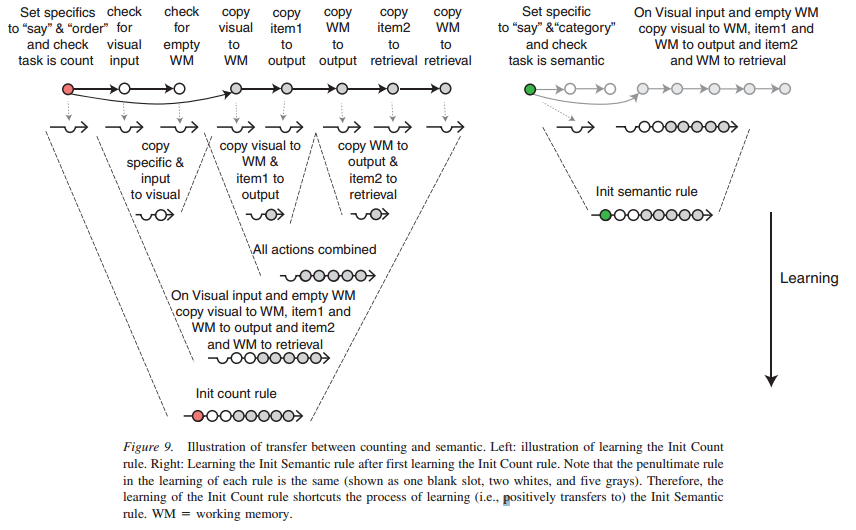Short Answer
A cognitive model is made that decomposes any skill in smaller elements or production rules. These elements (or combinations thereof) are often context independent and can be used for multiple tasks. The requirement for transfer of skill is that the tasks need to have some sort of overlap in how it is performed.
Long Answer
I found a cognitive model that tries to explain how transfer works (and thereby acknowledges its existence). The theory is called primitive elements theory of cognitive skills (PRIMs; Taatgen, 2013). The model is implemented based on the ideas of the cognitive architecture ACT-R. I will not go in to that too much, but in Figure 1 is the PRIMs representation of ACT-R:

According to PRIMs, each production rule represents part of a cognitive task. While initially each production rule is a separate cognitive step, with learning you can accumulate these production rules into one (See Figure 4 for an example).

The idea is that some of these elements (gray and white ones) are context independent. Steps like "check for empty working memory" and "check for visual input" are used in almost any task that requires visual input. Being context independent makes it not necessary to learn this over and over for every new skill you want to learn. The final figure (Figure 9) shows how counting, or to be more precise, an iterative component of counting, can be transferred to a Semantic task (answering questions like "is a canary a bird?"). The essence of transfer is thus that the tasks need to have some overlap in how the task is performed (in terms of basic cognitive elements).

Taatgen, N. A. (2013). The nature and transfer of cognitive skills. Psychological review, 120(3), 439.
ISO 690


